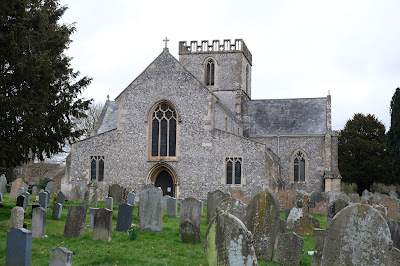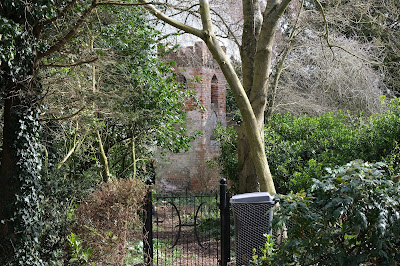Whitchurch Silk Mill
An exploration of Whitchurch and the river Test with my friend Merv. We started from the railway station and walked downhill to find the town centre. A little further along was the Silk Mill, the only one of the remaining mills which is still functioning. It was founded in 1800.
With the mill behind us there was a nice view of the mill pool and the River Test passing under a shallow bridge.
This was the view looking from the bridge. A good number of trout, some quite large, could be seen in the clear water.
We partially retrace our steps and walked past the town school to find a path following the line of the river to the east. We passed a former mill with with an imposing water wheel ...
... and followed open land, with the river to our left, to reach the village of Laverstoke. We were very struck by this group of houses and then had an amusing moment with some secondary school boys who were completely astonished by the idea of my taking a photograph of the houses. They simply couldn't comprehend why anybody would do such a thing.
At the end of this road (Laverstoke Lane) we turned left into London Road and passed the former Laverstoke Paper Mill. It turns out that the houses were built in the early 20th century for the mill workers. The quality of construction and spaciousness, which were what caught our eye, reflected the philanthropic ideas of the land owners, the Portal family.
We headed across fields towards the intriguingly named Freefolk. Its name is thought to indicated a free settlement outside the feudal system. St Nicholas church was founded in 1265, but it now has an 18th century look.
A path across further fields brought us to the handsomely restored and extended Bere Mill, dating from the 18th century. 25 years ago it was apparently close to dereliction. There was a nice view from the road bridge.
We continued along the road and turned left to pass the mill again over to our left. We noticed this intriguing sculpture on the way past.
We followed a path with the river on our left and as we returned to Whitchurch we spotted another mill, now converted into a house.
We found a narrow and steep path to take us towards main road and the station and were surprised to spot this red brick pill box overlooking the road. There are still a surprising number of these along the Kennet, but they are all concrete.
Conditions: a pleasant sunny day.
Distance: about six miles.
Map: Explorer 144 (Basingstoke, Alton & Whitchurch) and the Whitchurch Walks website. I would have to say that the walk leaflet, although interesting and very nicely presented, was not easy to follow, as the diagram was very small.
Rating: four stars.
































